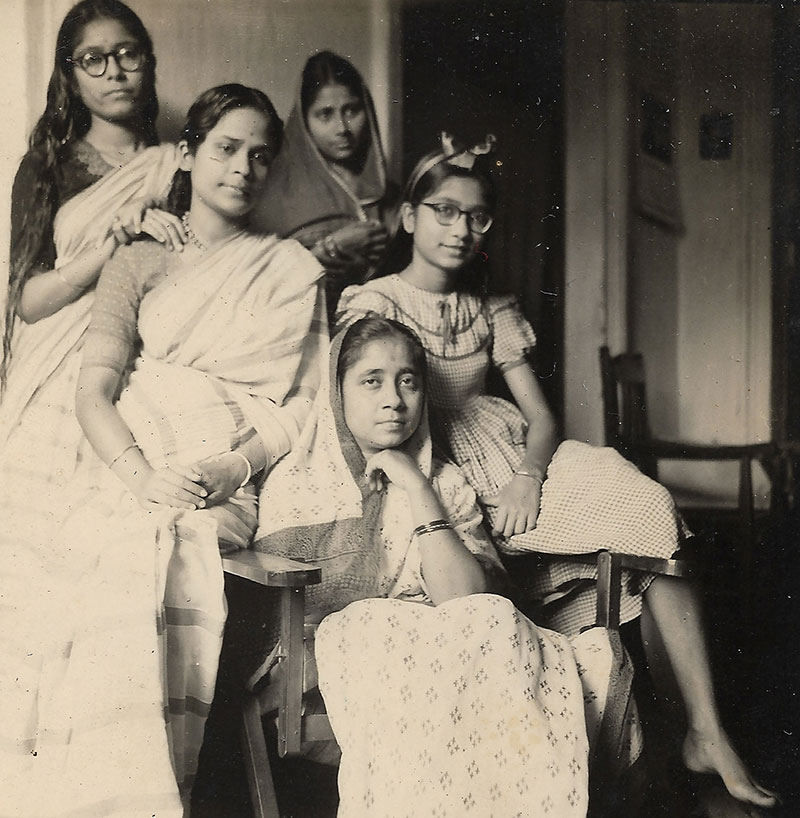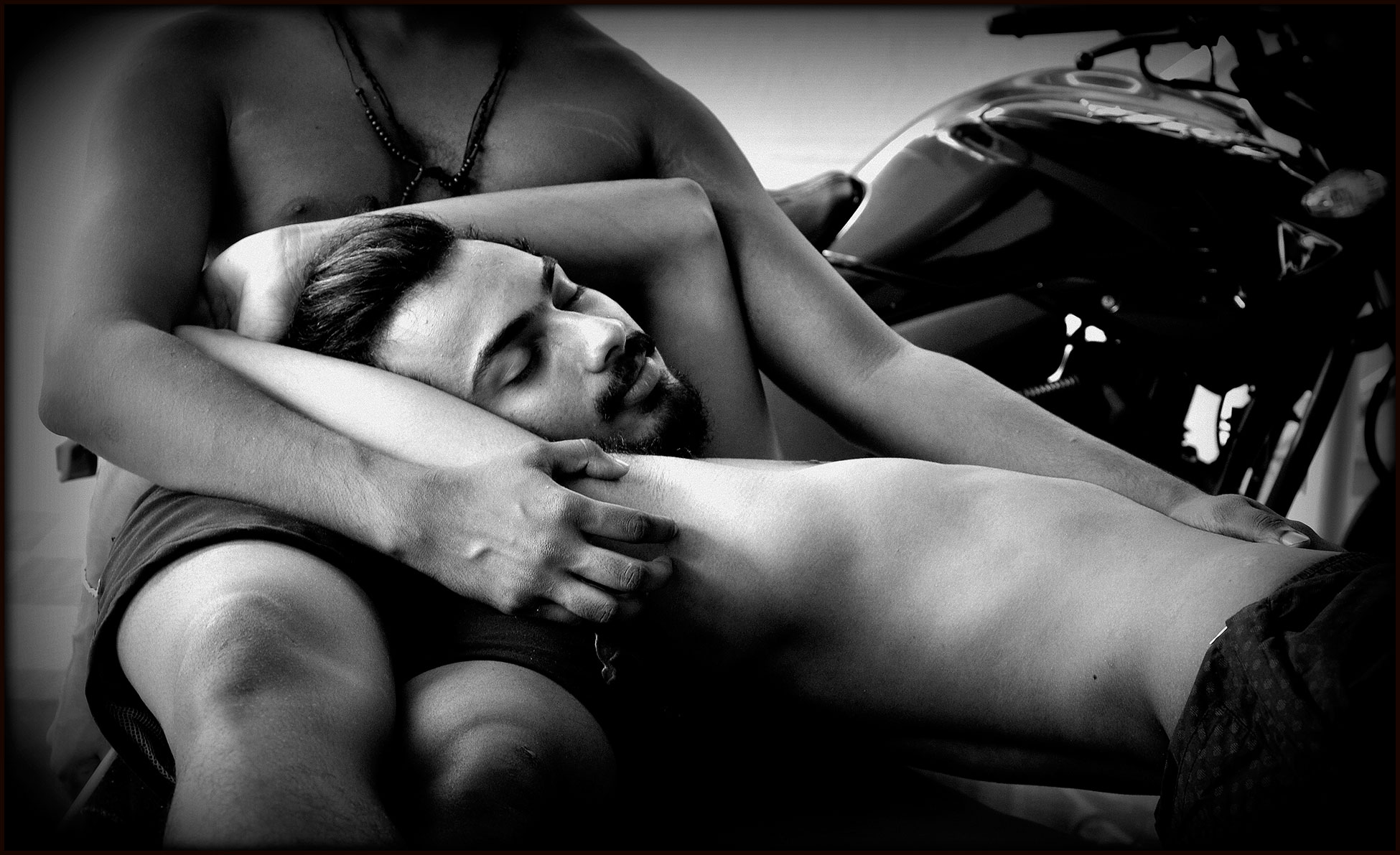Zoom In
Exhibition Review
PhotoMail constructively and
Critically zooms into
The life and work of photographers
Its art and techniques
Contemporary theory
Aesthetics, material philosophy and
Sociology
Gautham Ramachandran
reviews
Elements and Fragments
A Group Show of 6 artists
Featuring Project 365 Tiruvannamalai
at Victoria Memorial Hall, Kolkata
13th Feb 2018 – 30th April 2018
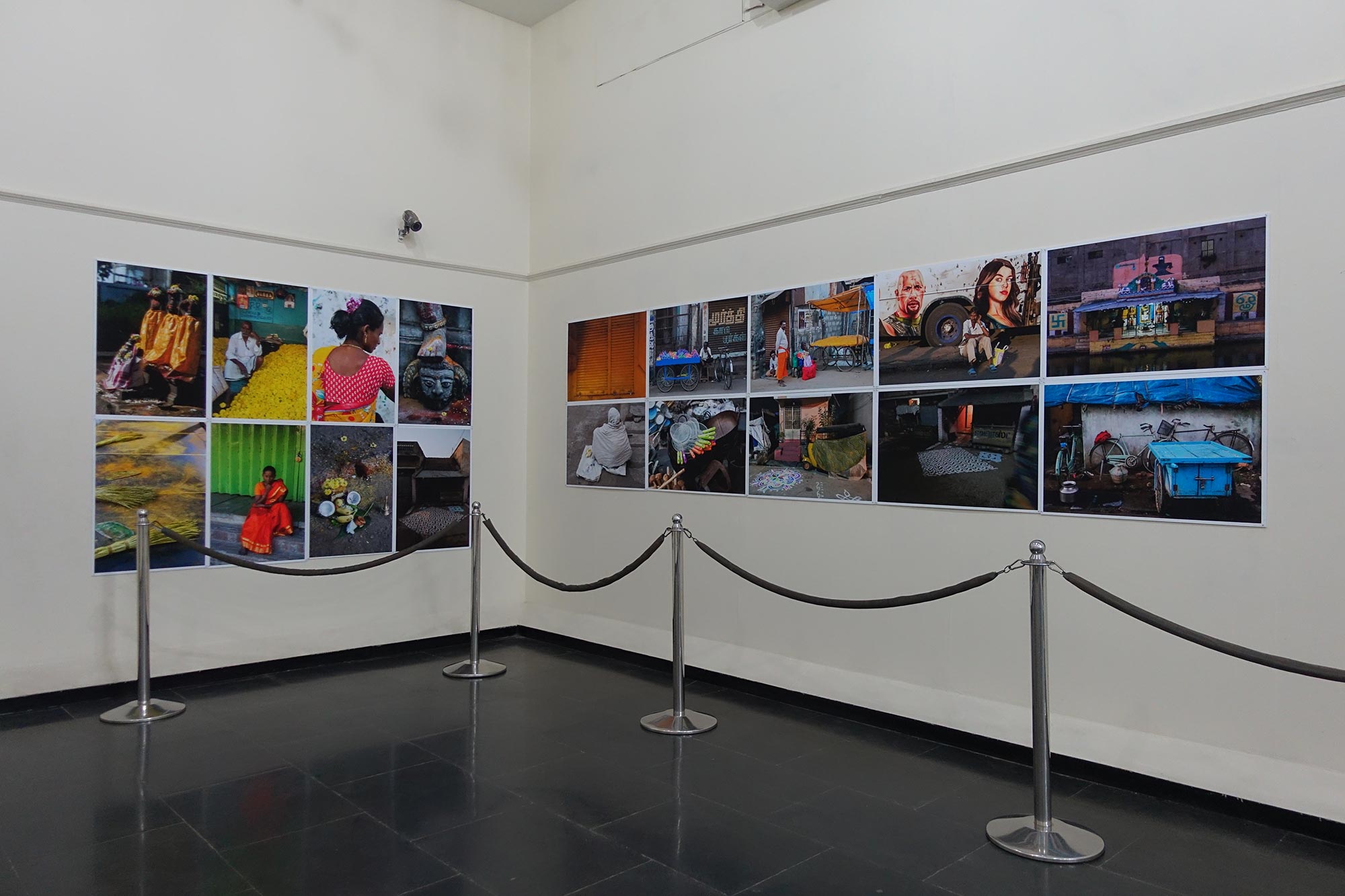
Elements and Fragments Exhibition View, Portrait Hall, Victoria Memorial Hall, Kolkata
“Elements and Fragments”, the premiere show of Project 365 Tiruvannamalai, co-hosted by Victoria Memorial Hall, Kolkata and Ekalokam Trust for Photography showcases a curated set of images from multiple series of photographs by Abul Kalam Azad, Thierry Cardon, R R Srinivasan, Dinesh Khanna, Waswo X Waswo and Leo James, endeavours to render visible the under-represented elements of Tiruvannamalai. It does not propose a ‘fully formed’ or a ‘pre-conceived’ picture of Tiruvannamalai, but merely tries to expose possible cross-sections of the everyday life of the town and its people. The photographic prints have been created using a wide range of techniques including cyanotype, palladium prints, silver gelatin process, and modern digital prints. The idea of the show is to present a few images of a Tiruvannamalai that is not included in the popular narrative – its ancient landscape, culture, philosophy, religious history, and ethnography – and invites questions about the inconspicuous subaltern histories of the temple town.
Mainstream historical narratives are notorious for their tendency to pander to a particular power structure’s opinion of what it deems to be ‘worthy’ of being chronicled. As such, documentation is never devoid of political ideology, and cannot amount to an ‘ultimate’ truth. Photography’s association with the genre of documentation stems from its capability to instantaneously freeze a moment in time seemingly without any regard for what is being ‘captured’. This is the basis of the popular belief that a photograph is a self-evident truth – a belief that does not consider the conscious intervention of the image maker in the process of producing a photograph. It is this aura of believability that endows photographic archives with the power to drive historical narratives, even though it is not very different from theatre.
Photographic practice cannot escape its essential nature – that it inescapably and unavoidably constructs, enacts, and produces images, rather than being an unbiased herald of truth. To put it simply, it is not possible to create authoritative/objective narratives through a medium that necessarily ‘constructs’ the world it depicts. Robert Capa’s fantastical war photographs raised questions about the implications of these accounts – how would society react to such beautiful depictions of war? Due to this inherent nature of photography, arguments regarding the ‘construction’ of narratives become futile; rather the arguments should be focused on how narratives are created, and their effects.
Photography was introduced to India soon after its invention, although the exact history of its arrival is still obscure. As early as January 1840, Thacker and Company of Calcutta were importing daguerreotype cameras and advertising them in the daily, Friend of India. Photography arrived in India as a novelty – as a “toy”, marketed as the “new art of sun drawing.” The first commercial photographer to open a photography studio was F Schranhofer, who set up a Calotype studio at 2 Kyd Street, Calcutta in 1849. Daguerreotype studios came up shortly thereafter, in 1850, in Bombay, and then in Calcutta, in 1852. Although the Daguerreotypes persisted through the 1850’s and early 1860’s, they gave way to the Calotype establishments. The European market at the time was captivated by a sense of conspicuous consumption – buying of commodities that had an exotic flavor. The introduction of photography, was informed to a major part by this sense – borne out of the resident Europeans’ desire to keep up with the “trends” of an exotic land, and the consumer market’s need to offer novelties to stay ahead of the competition.
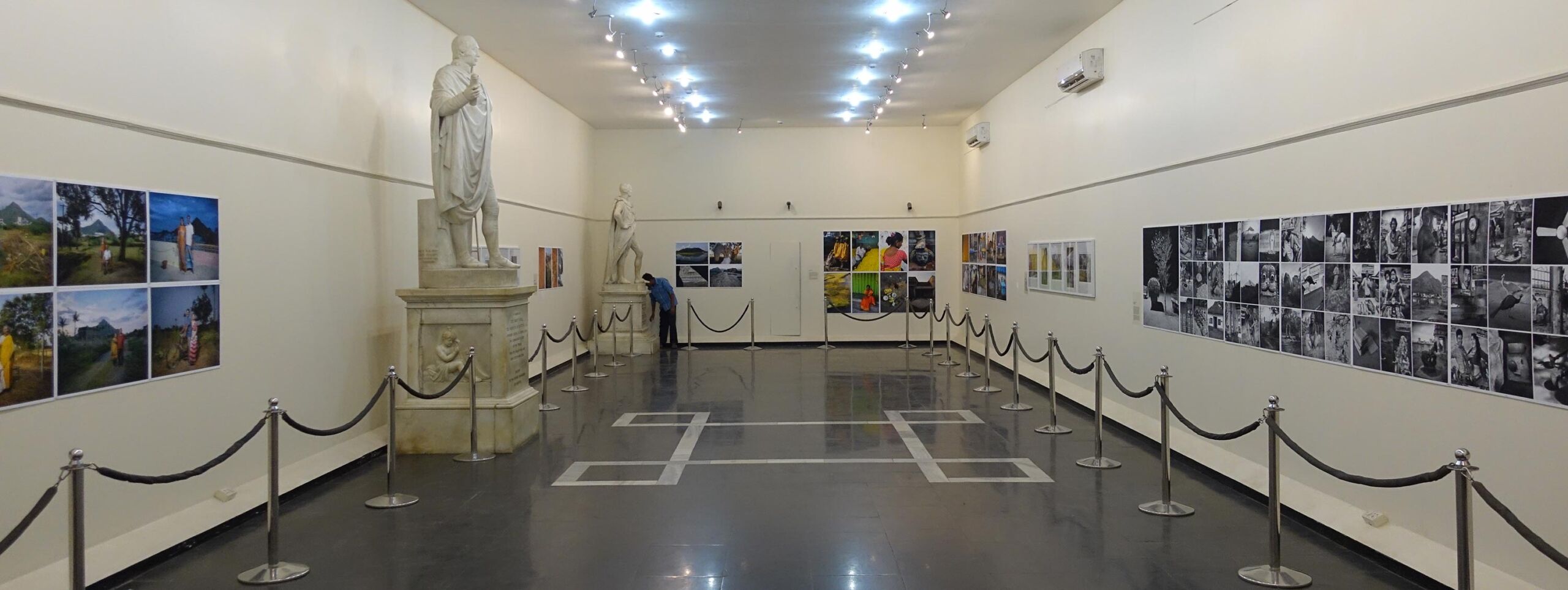
Elements and Fragments Photography exhibition at Victoria Memorial Hall, Kolkatta
Tiruvannamalai is an ancient nature worship site, situated in the Bangalore–Pondy Highway, Tamil Nadu. Experiments done by Geological Survey of India has revealed that the charnockite rock which makes up the Annamalai hill in Tiruvannamalai is older than 3.5 billion years and believed to have formed as a result of a massive volcanic eruption. The fertile land around the hill was highly potent for farming and soon became an important human settlement in South India. During the Sangam/Classical period (3rd century BCE to 3rd century CE), Buddhism and Jainism were the most prominent philosophies in South India and during that time, Tiruvannamalai became one of the important centers for Jain culture and learning. Later, many a legends and mythical stories of Tamil Saiva lore grew around the Annamalai Hill and it came to be revered as “Agni” (fire), one of the panchabhootas (five elements). Substantial historical records of this town are available from the 9th century CE, mainly from Chola inscriptions in the Annamalaiyar temple of Tiruvannamalai. Further inscriptions made before ninth century, found scattered around the small town, indicate the rule of Pallava kings, whose capital was Kanchipuram. The seventh century saint poets Sambandar, Appar and Manickavacakar wrote of the temple in their poetic works. The Chola Kings ruled over the region for more than four centuries, from 850 to 1280 CE, and were temple patrons. The inscriptions from the Chola king record various gifts like land, sheep, cow and oil to the temple commemorating various victories of the dynasty. The Annamalaiyar temple is nothing short of an architectural marvel, encompassing a wide array of iconographic styles and techniques.
The Annamalaiyar temple is one of the largest Shiva temple complexes in India, spanning over 25 acres. There are no concise written records indicating the exact time period when the earliest structures of Annamalaiyar temple were erected. The modern temple complex is a result of constructions carried out by successive dynasties of Kings over many centuries – especially the post-Sangam period Chola dynasties (9th century CE), and later expanded by the Sangama dynasty, who ruled Vijayanagara (1336-1485 CE), the Saluva dynasty, and the Tuluva dynasty (1491-1570 CE), and Tanjore Nayaks. In the 17th century, Tiruvannamalai town and the temple came under the stewardship of the Nawab of Carnatic (Arcot), a vassal of the Nizam of Hyderabad. After 1753, the town came into the domain of Europeans, with the French occupying it in 1757, and then the British in 1760 until Tipu Sultan annexed the territory in 1790. It finally fell back into British hands in the early 19th century.
Elements and Fragments exhibition at Portrait Gallery, Victoria Memorial Hall, 2018
Photographs of Tiruvannamalai dates back as far as the 1880’s – quite possibly as part of the colonial drive to document and preserve India’s monuments and historical sites that was initiated post the 1857 uprising. These images were focused on the architecture of the Annamalaiyar temple. Very few images and even lesser information about the men behind the images are available from this period. The “second phase” of photographic history of Tiruvannamalai came about with the emergence of another pivot, who is perhaps today more famous than the Annamalaiyar temple – the presence of Ramana Maharshi in the archives of photographic images of Tiruvannamalai is, in a word, overbearing. Photographers who had visited Tiruvannamalai in Ramana’s time have left behind a rich catalogue of visuals, including Indian photographers like P R S Mani Iyer (who had worked in Modern Theatre of Salem as an executive photographer), Dr. T N Krishnaswamy, and G Govind Welling. P R S Mani’s most famous photo of Sri Ramana titled ‘Mani bust’ (1917-1922) has been circulated and worshipped in South India and abroad since late 1930s. Amateur photographer Dr. T N Krishanswamy first visited Tiruvannamalai when he was a medical student. The photograph he took of Ramana enchanted the people living in the Ramanashram so much so that he was invited back to become the “official” photographer of the ashram. Over the years, Krishnaswamy produced a comprehensive collection of photographs pertaining to Ramana, the ashram, and the temple – almost 85% of the images in the Ramanashram archives is attributed to Dr. T N Krishnaswamy (shot between the 1930’s to 1950). G Govind Welling was a professional photographer, and renowned camera maker who owned a photography requisitions store in Bangalore (which is still operational today). The Welling bust, taken in 1946, depicts Ramana in a sort of “ethereal” glow. It is claimed to have been shot in the moonlight, and the story that is attached to it goes that when Ramana, who was a keen observer of photography and its process, asked about the lighting, Welling is famously said to have replied: “Bhagavan, you are the light!”. Welling only visited Tiruvannamalai that one time, for a span of 3 days.
The town’s international fame is partly due to the images created by the American photojournalist Eliot Elisofon, which were published in Life magazine (a photojournalism weekly news magazine, owned by TIME), and the iconic Henri Cartier-Bresson published in Magnum. Eliot Elisofon’s assignment in India in the late 1940’s, was to depict the art and ancient rock-cut architecture of Hindu and Buddhist temples at various locations in India, including cave temples at Ellora, Ajanta, Elephanta Island, and Mamallapuram; Lingaraj and other temples of Shiva in the temple city Bhubaneswar; the Sun Temple of Konark and Arunachaleshwarar (Annamalaiyar) temple in Tiruvannamalai. Initially tempted to meet Sri Aurobindo, who was living the life of a hermit, hardly meeting anybody or appearing in public, other than to give ‘darshan’ once every four months, Elisofon was informed of an “equally famous” holy man in Tiruvannamalai – a man who, according to his followers, piloted the global destiny through his meditative prowess; a feat that was claimed by followers of Sri Aurobindo of their master as well. Elisofon made several photographs of Tiruvannamalai, the Annamalaiyar Temple, and Sri Ramana at his Ashram. His photographs on Tiruvannamalai was published on 30th May 1949, the article was titled “Holy Man”, written by Winthrop Sargeant – senior writer for Life. The article drew a huge amount of attention to Ramana and the ashram, which became the focus of Tiruvannamalai, and also indirectly precipitated the visit of Henri Cartier-Bresson.
Cartier-Bresson’s images of Tiruvannamalai are not devoid of the typical representations of the “exotic” that is all too familiar in the colonial projects. His contributions to the medium of photography notwithstanding, Bresson’s agenda in India was straightforward – making saleable photographic prints of the subcontinent, its culture, and people; and this attitude is quite apparent in his negotiations with the ashram regarding the prints he had produced. After long negotiations, Bresson bequeathed a few prints to the ashram – which remain a proud acquisition, and has been extensively reproduced for commercial use. Bresson’s documentation of the death of Ramana is a reflection of how the west was seeing its colonies – naive and fantastical. Interestingly, Bresson also claimed in various instances that he saw a “ball of fire” slowly move across the sky and come to rest on the Annamalai hill, shortly after Ramana’s passing.
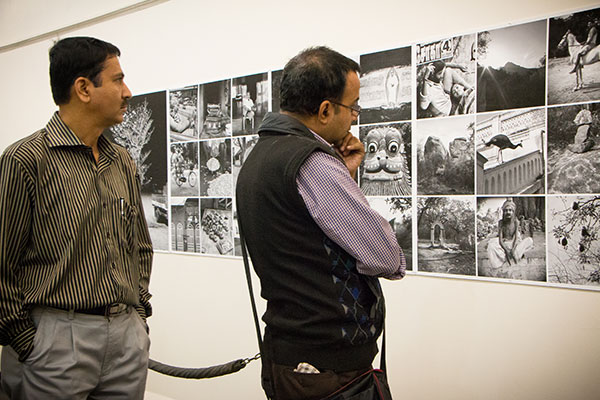
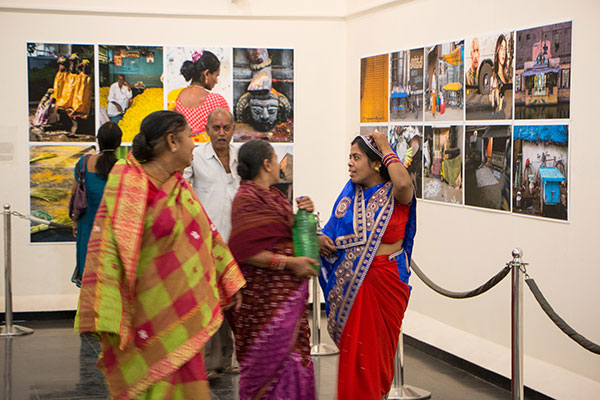
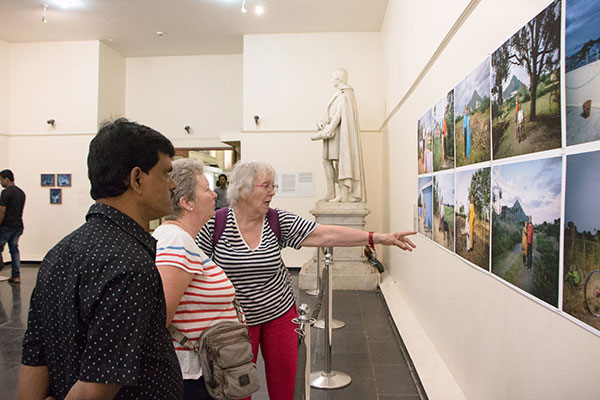
Elements and Fragments exhibition at Portrait Gallery, Victoria Memorial Hall, 2018
To this day, Tiruvannamalai’s identity is tied to Ramana through the photographs of P R S Mani, G G Welling, Dr. T N Krishnaswamy, Eliot Elisofon, and Henri Cartier-Bresson. When interviewed in the 1960’s, Dr. T N Krishnaswamy, in response to being asked how he felt when he first saw the Maharshi, said that the Maharshi did not seem to take notice of anything around him, and that his eyes were “shining” and there was something “divine” about his countenance. Inasmuch, every photographer that ever visited Tiruvannamalai never took notice about anything other than Ramana and the Annamalaiyar temple – their eyes glossing over everything else and their focus devoted entirely to the two ‘divine’ icons. But, there remains a Tiruvannamalai beyond, which has gone unnoticed and undocumented – invisible to the colonial gaze that is pre-occupied with its exotic fairy tales, and underwhelming for the photojournalist due to its perceived mundane-ness. If there were any attempts to the contrary, the conspicuous nature of the Ramanashram archives and its fixation with the Sage has made such documents all but indiscernible or lost. This attitude is curiously reminiscent of the colonial projects of British India – where the Company held control over how the world saw this land.
The colonial photography projects were backed by powerful commercial imperatives when they were beginning to be commissioned by the mid-1850’s – the new dominion had to be projected to investors in Britain as a land worthy of their investment. Their prominence in history is perhaps an ode to the success of their archival preservation. The photography projects initiated and archived by the colonial government was their epistemological master plan for India. The sheer scale of the colonial archives and the commissioned projects preserved therein, served to canonize the colonial state’s narrative of India and its people to itself. The photographs of Captain Linnaeus Tripe of South India (1857-58), were perhaps a comprehensive virtual tour offered to the British audience of a foreign land. In 1863, John and James Nicholas, who together were known as the Nicholas Brothers, Photographers of Madras, established a studio and concentrated on the South Indian landscape. They produced such works as “Madura, No. 6. A Passage in the Temple”, and “Seringapatam: Mausoleum Erected Over Tippoo Sultan and Haider Ali”. The representation of the natives were non-existent in such collections – as far as the Empire was concerned, they were primitive barbarians. This view was further endorsed by Max Muller, and ‘studies’ were carried out in this regard to better ‘catalogue’ the primitives. “The Castes and Tribes of South India”, a seven-volume ‘anthropological study’, carried out by the Edgar Thurston and K Rangachari in 1909, was intended to be an encyclopedia of sorts of the social groups living inthe Madras Presidency and the erstwhile princely states of Travancore, Mysore, Coorg, and Puddokottai, with a discussion on prevailing theories of anthropometry and craniometry – the basis for the Caucasians’ perceived ‘superiority’. It was an attempt to collate information and produce an ‘ethnographic’ portrait of the people by providing descriptions of their physiognomy, rituals, religious beliefs, social traditions, and communal practices. These projects denied the colonized natives the right to privacy and that of self-representation – since the visuals were being constructed from a stance of the aforementioned ‘superiority’.
Outside the realm of official photography commissioned directly by the Crown, commercial and personal archives were producing a parallel narrative. Photographers like Felix Beato, whose documentation of the carnage immediately after the 1857 mutiny in pictures of unearthed bones and hung rebels, in Walter Benjamin’s terms, paint a “phantasmagoric aesthetic” – through which it perceptually alienates the colonials and the colonized and justifies the ideology of the colonial state’s civilizing mission. The images produced by Captain Wallace Hooper of the Madras famine of the 1870’s are examples of attempts to drum up sympathy for the colonized, and more importantly, to re-iterate the need for a “benevolent” Empire.
These histories of documentation have consciously or unconsciously warped the nature of photographic representation – even if we are talking about a tiny temple-town.
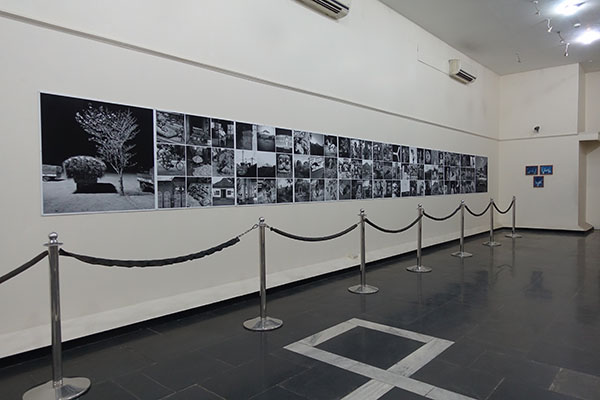
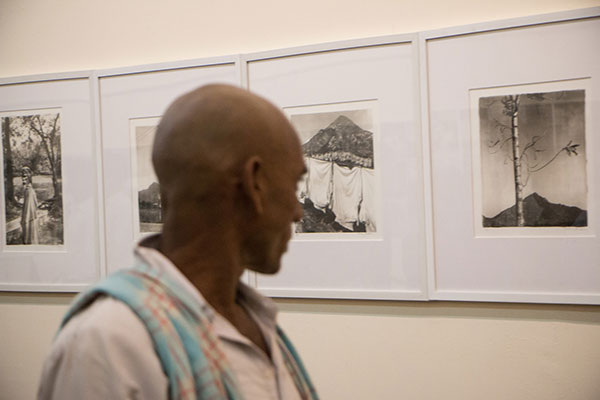
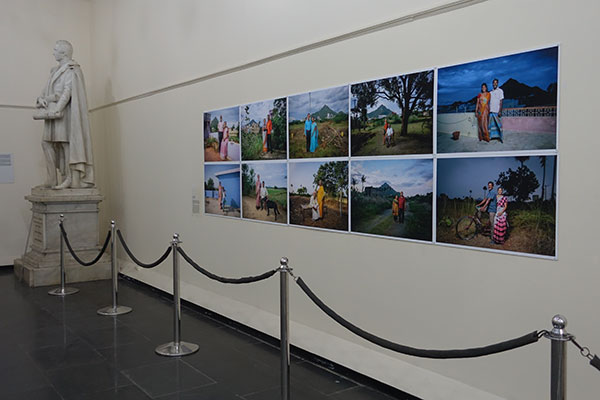
Elements and Fragments exhibition at Portrait Gallery, Victoria Memorial Hall, 2018
Contemporary photographic imagemaking is slowly evolving out of this shell of quasi-superior nature. The works produced in EtP’s pilot photo-art project, Project 365 Tiruvannamalai, was an attempt to enable the visual recording of this small temple-town by de-locating the photographic gaze from that of an occidental perspective ‘studying’ its subjects with alienation and disengagement insofar as to only confirm the pre-conceived ideas/notions about them, to that of an engaged artist who is in a dialogue with the subject and acknowledges their right to represent themselves. The project has been undertaken at a paradigm shift moment, when the impact of globalization and technological advancements is fast changing the contours of contemporary life, lifestyle and people. Even though photography has pervaded every corridor of human life, very few images are available in the public domain and out of the one lakh photographs taken, on average, only one is being printed and preserved for posterity. Besides, in the digital era, there is an overflow of information, as well as a lack of focused effort that systematically documents and archives the everyday scenario – the mundane life that is infused with cultural symbols.
Project 365 Tiruvannamalai was led by contemporary Indian photographer Abul Kalam Azad. He has contributed the major part of the three thousand and odd photographs that are part of the public archive. The contributors include R R Srinivasan, Dinesh Khanna, Waswo X Waswo, Thierry Cardon, Ramu Aravindan, Shibu Arakkal, Bhagyashri Patki, Anurag Sharma, Ami Gupta, Arnav Rastogi, Shiv Kiran, Leo James, J Jayaraman, Panneer Selvam, Biju Ibrahim, Radhi Jangla, Jiby Charles, P Venkatesan Perumal, Varun Gupta, Seema Krishnakumar, Iqbal M K, Maveeran Somasundaram and Boney K R. Each project photographer worked on his/her own individual photo project, using their own medium of choice – smartphones, 35mm, digital cameras, traditional cameras – providing a comprehensive view of contemporary Tiruvannamalai. The strength of the project is the collective consciousness generated by the team, which is made of individuals who come from diverse cultures, languages, experiences, exposures, and interests. As a collective, they try to weave a comprehensive visual narrative.

Gautham Ramachandran is an upcoming artist who works with Photography, Printmaking, and Painting. He is a graduate of The Govt. College of Fine Arts, Thrissur where he received his degree in Painting, and completed his Masters in Printmaking from the SN School of Arts and Communication, Hyderabad.
Published on February 16, 2018
Share
Related Articles

In my taxi, when a photo artist becomes a cab driver
What motivated Weideman to keep photographing? The answer to this is also an important quality that makes his photographs intriguing. He continued shooting even though he was not exhibiting nor getting into any sort of limelight until the mid-90s. Passion for the medium, of course. But there is more.
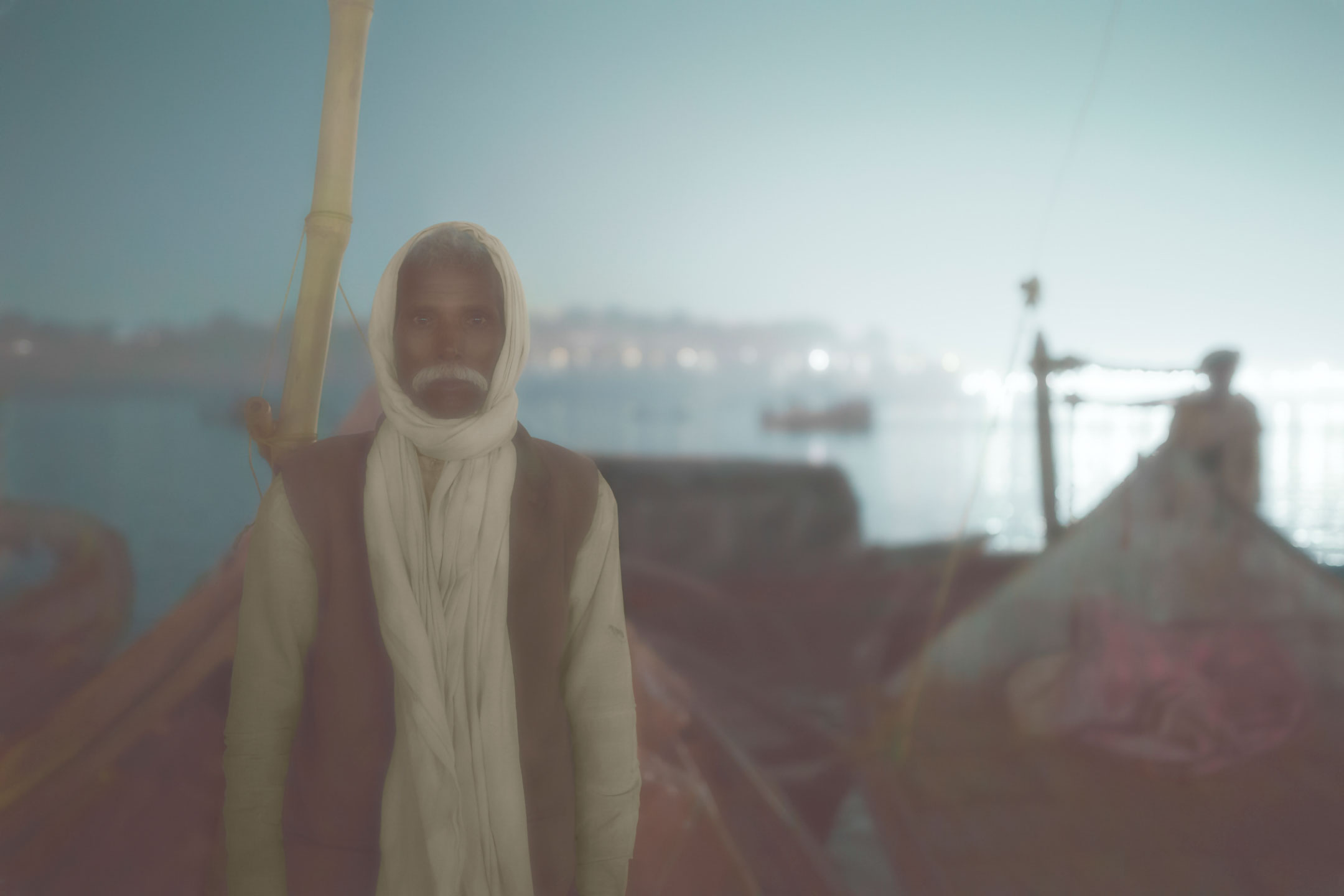
Mallaahs, the boatmen of Gangetic geography, A Photo Art series by Shibu Arakkal
Review of Mallahs, the boat of Gangetic geography, photographic series of Shibu Arakkal. For several hundred years these boatmen on the Ganga and the Yamuna have handed down their oars from father to son. I was intensely drawn to the purpose of their lives, to carry people back and forth on these rivers. Almost married to their boats, these men. To live almost all of their lives on these wooden vessels, going about their worldly chores and belonging to a tribe of menfolk, they pride themselves on being the real caretakers of these mystical rivers. Almost as if they are born on these boats and just as possibly may breath their last on it, the Mallaah men live lives removed from their families and children.
In search of the lost home
Across the world there are ongoing attempts to construct a ‘people’s history’ through photographs. Memory Projects, they are fondly called, focus mainly on the pre-digital era when photography was not as common as today. Bengali photographer Anandarup Goswami’s photography series ‘A Home of No Return’, though not directly linked with any memory project, shows certain resemblances with the latter’s style, and yet carries its own soul. A Home of No Return visually narrates the past and the present through a mixture of faded and fresh photographs.
Homomorphism II
The LGBTQ community has found for itself public spaces in urban regions. We will wait and see what they want to tell the world from that space. After all, solidarity with the cause does not mean solidarity with the acts, and it is time for the community to begin to act convincingly. This exhibition is a good starting point, and further on, there is a desperate need for clarity on the part of the activist-artists.

Elements and Fragments, Uncovering Narratives of a Temple Town
Inasmuch, every photographer that ever visited Tiruvannamalai never took notice about anything other than Ramana and the Annamalaiyar temple – their eyes glossing over everything else and their focus devoted entirely to the two ‘divine’ icons. But, there remains a Tiruvannamalai beyond, which has gone unnoticed and undocumented – invisible to the colonial gaze that is pre-occupied with its exotic fairy tales, and underwhelming for the photojournalist due to its perceived mundane-ness.


